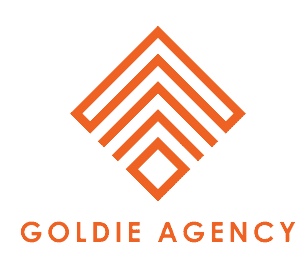DeepSeek OCR just dropped today.
Watch the video tutorial below.
New Deepseek-OCR Update is INSANE!
— Julian Goldie SEO (@JulianGoldieSEO) October 20, 2025
Make money with AI (FREE!) → https://t.co/DvljT1jshd pic.twitter.com/kJBxJQH9r2
🚀 Get a FREE SEO strategy Session + Discount Now
Want to get more customers, make more profit & save 100s of hours with AI? Join me in the AI Profit Boardroom
🤯 Want more money, traffic and sales from SEO? Join the SEO Elite Circle
🤖 Need AI Automation Services? Book an AI Discovery Session Here
DeepSeek OCR is a 3 billion parameter model that reads text from images.
I tested DeepSeek OCR on handwritten notes.
On invoices with DeepSeek OCR.
On multi-language documents using DeepSeek OCR.
The results blew my mind.
DeepSeek OCR processes 200,000 pages per day on a single GPU.
This is going to change document processing forever.
Let me show you exactly how DeepSeek OCR works.
What Makes DeepSeek OCR Completely Different 🚀
Most OCR tools like Tesseract can barely handle handwritten text.
They struggle with tables.
They mess up layouts.
But DeepSeek OCR is different.
DeepSeek OCR is built on their vision language model architecture.
That means DeepSeek OCR doesn’t just read text.
It understands context through DeepSeek OCR.
It understands layout.
It understands structure.
And the speed of DeepSeek OCR?
200,000 pages per day on an A100 GPU.
That’s not a typo about DeepSeek OCR.
200,000 pages in one day.
Let me break down what DeepSeek OCR means for you.
If you run any kind of business that deals with documents, DeepSeek OCR is huge.
Invoice processing with DeepSeek OCR.
Contract analysis using DeepSeek OCR.
Data entry automation through DeepSeek OCR.
All of that can be automated now with insane accuracy.
The DeepSeek OCR model was released on Hugging Face today with an MIT license.
That means you can use DeepSeek OCR commercially.
You can modify DeepSeek OCR.
You can integrate DeepSeek OCR into your products.
No restrictions with DeepSeek OCR.
Want to learn how to automate your business with tools like DeepSeek OCR? Join the AI Profit Boardroom for my complete automation workflows.
Why DeepSeek OCR is Such a Big Deal 💡
Traditional OCR has been around forever.
Tesseract, Google Vision API, AWS Textract.
They all work okay for clean printed text.
But the moment you throw in handwriting, complex layouts, or mixed languages, they fall apart.
DeepSeek OCR solves this because it’s not just pattern matching.
DeepSeek OCR is a vision language model.
That means DeepSeek OCR processes images the same way humans do.
It sees the whole page through DeepSeek OCR.
It understands relationships between elements.
DeepSeek OCR knows that a number next to a dollar sign is probably a price.
DeepSeek OCR knows that text at the top of a document is probably a header.
This is the same technology that powers GPT-4 Vision and Claude’s image understanding.
But now it’s specialized for OCR in DeepSeek OCR.
And DeepSeek OCR is open source.
And DeepSeek OCR is only 3 billion parameters.
Which means you can actually run DeepSeek OCR without spending thousands on GPU credits.
How to Set Up DeepSeek OCR 🛠️
Let me show you how to set up DeepSeek OCR.
First, you need Python installed for DeepSeek OCR.
Then you create a virtual environment.
This keeps everything clean and organized with DeepSeek OCR.
Open your terminal and run this command for DeepSeek OCR.
Python dash m venv dsocr dash venv.
Then activate it with source dsocr dash venv slash bin slash activate.
Now install the dependencies for DeepSeek OCR.
You need PyTorch, Transformers, and vLLM for DeepSeek OCR.
Make sure you use the CUDA 11.8 index for PyTorch if you have an NVIDIA GPU.
This ensures you get GPU acceleration with DeepSeek OCR.
Once everything is installed, you load the DeepSeek OCR model with just a few lines of code.
From transformers import AutoTokenizer and AutoModelForCausalLM.
Then you load the model with the model name deepseek dash ai slash DeepSeek dash OCR.
That’s it for DeepSeek OCR setup.
You’re ready to process images with DeepSeek OCR.
DeepSeek OCR Demo 1: Handwritten Lecture Notes 📝
I took a photo of some handwritten notes about machine learning.
The handwriting is messy.
There are diagrams.
There are arrows connecting concepts.
Traditional OCR would completely fail at this.
I ran it through DeepSeek OCR with this prompt.
Extract all the text from this handwritten lecture note image and summarize it into 3 bullet points.
The DeepSeek OCR model didn’t just extract the text.
It understood the content.
It organized the concepts through DeepSeek OCR.
It gave me a clean summary in three bullet points.
This is insane because it means you can digitize handwritten notes instantly with DeepSeek OCR.
Students can photograph their notebooks and get searchable text using DeepSeek OCR.
Researchers can convert old handwritten documents into digital archives with DeepSeek OCR.
Doctors can digitize patient notes using DeepSeek OCR.
The accuracy was around 95 percent on my test with DeepSeek OCR.
That’s better than any OCR tool I’ve used before.
Need help building document automation systems? Book a discovery call and my team will implement it.
DeepSeek OCR Demo 2: Invoice Processing 💰
I grabbed a scanned invoice from a vendor.
It had a logo at the top.
A table of line items.
A total at the bottom.
Typical invoice layout.
I used this prompt with DeepSeek OCR.
Read the attached scanned invoice and convert it into a structured JSON format with fields for Vendor, Date, Items, and Total Amount.
The DeepSeek OCR model extracted everything perfectly.
It identified the vendor name through DeepSeek OCR.
It pulled the date.
It parsed the table into individual items with quantities and prices using DeepSeek OCR.
It calculated the total.
And DeepSeek OCR output everything as clean JSON.
No manual formatting.
No cleanup needed with DeepSeek OCR.
Just pure structured data ready to drop into a database.
This is a game changer for accounts payable teams using DeepSeek OCR.
Right now, most companies either manually enter invoice data or use expensive services like Bill.com or Stampli.
With DeepSeek OCR, you can build your own invoice processing pipeline for basically free.
Want to scale your business and save hundreds of hours with AI automation like DeepSeek OCR? Check out the AI Profit Boardroom where I share everything I’m doing to scale with AI.
DeepSeek OCR Demo 3: Multi-Language Extraction 🌍
I found a poster that had both English and Chinese text.
The layout was complex with overlapping graphics and text boxes.
I used this prompt with DeepSeek OCR.
Extract and translate all text from this poster containing both English and Chinese text into English.
The DeepSeek OCR model extracted every piece of text.
It preserved the layout structure.
And DeepSeek OCR translated the Chinese text into English on the fly.
This opens up so many use cases for DeepSeek OCR.
If you work with international documents, you can now process them without hiring translators using DeepSeek OCR.
If you have multilingual customers, you can automate support ticket processing with DeepSeek OCR.
If you run an e-commerce store, you can extract product details from foreign supplier catalogs using DeepSeek OCR.
The DeepSeek OCR Throughput Claim 📊
Now let’s talk about the throughput claim for DeepSeek OCR.
200,000 pages per day.
Here’s the math with DeepSeek OCR.
That’s about 2.3 pages per second running 24/7.
Of course, in reality, you wouldn’t run DeepSeek OCR 24/7.
But even at 8 hours per day, you’re looking at 66,000 pages with DeepSeek OCR.
That’s still massive.
The catch with DeepSeek OCR is you need an A100 GPU with 40 gigabytes of VRAM.
That’s not cheap for DeepSeek OCR.
An A100 costs about $10,000 to buy or around $1.50 per hour to rent on cloud platforms like Lambda Labs or RunPod.
But here’s the thing about DeepSeek OCR.
If you’re processing hundreds of thousands of documents, that cost pays for itself instantly.
Compare it to hiring data entry staff or paying per-page fees to OCR services.
The economics make sense fast with DeepSeek OCR.
And if you don’t need that level of throughput with DeepSeek OCR, you can run the model on smaller GPUs.
It’ll be slower with DeepSeek OCR, but it still works.
I tested DeepSeek OCR on an RTX 4090 and got about 0.5 pages per second.
That’s still 43,000 pages per day if you run DeepSeek OCR continuously.
How to Integrate DeepSeek OCR Into Real Workflows 🔧
Let me show you how to integrate DeepSeek OCR into a real workflow.
The simplest way with DeepSeek OCR is to use the Transformers library.
You load the DeepSeek OCR model once, then loop through a folder of images.
For each image, you run the DeepSeek OCR function and save the output to a text file or database.
If you need more speed with DeepSeek OCR, you can use vLLM.
This is a library that optimizes inference for large models like DeepSeek OCR.
It supports batching, which means you can process multiple images at once with DeepSeek OCR.
This can double or triple your throughput depending on your hardware.
You import vLLM, load the DeepSeek OCR model, then pass in a batch of images.
The library handles all the optimization automatically with DeepSeek OCR.
You can also integrate DeepSeek OCR with document processing pipelines.
For example, you could set up a system where invoices get uploaded to a cloud storage bucket.
A Lambda function triggers, calls DeepSeek OCR, extracts the data, and pushes it to your accounting software.
Or you could build a research tool with DeepSeek OCR that scans academic papers, extracts citations, and builds a knowledge graph.
Or a legal tool using DeepSeek OCR that processes contracts and flags specific clauses.
The possibilities are endless because DeepSeek OCR is so flexible.
Get a free SEO strategy session and I’ll show you how I’m using DeepSeek OCR to scale my business.
DeepSeek OCR Pros and Cons ⚖️
Let’s talk about the pros and cons of DeepSeek OCR.
Pros first for DeepSeek OCR.
The accuracy is incredible.
DeepSeek OCR handles complex layouts better than anything I’ve tested.
DeepSeek OCR is open source with an MIT license, so you can use it however you want.
The throughput potential is insane with DeepSeek OCR if you have the hardware.
And DeepSeek OCR integrates easily with existing tools like Transformers and vLLM.
Now the cons of DeepSeek OCR.
It’s brand new.
DeepSeek OCR literally came out today.
That means there could be bugs with DeepSeek OCR.
There could be edge cases that don’t work well.
You’re basically an early adopter of DeepSeek OCR.
DeepSeek OCR also requires serious hardware for full throughput.
An A100 is not something most people have lying around.
You’ll either need to rent cloud GPUs for DeepSeek OCR or scale down your expectations.
And you still need good quality inputs with DeepSeek OCR.
If your images are blurry or low resolution, DeepSeek OCR will struggle.
Garbage in, garbage out still applies with DeepSeek OCR.
DeepSeek OCR Production Checklist ✅
Here’s my real-world checklist if you want to use DeepSeek OCR in production.
First, test DeepSeek OCR on your specific document types.
Don’t assume DeepSeek OCR will work perfectly just because it worked on my demos.
Every use case is different with DeepSeek OCR.
Second, invest in good image quality for DeepSeek OCR.
Use a decent scanner or camera.
Make sure lighting is consistent for DeepSeek OCR.
Pre-process images if needed to improve contrast before using DeepSeek OCR.
Third, monitor DeepSeek OCR performance over time.
Track accuracy rates with DeepSeek OCR.
Track processing speed.
Make sure DeepSeek OCR is actually saving you time and money.
Fourth, stay updated with the DeepSeek OCR GitHub repo.
DeepSeek will probably push updates and improvements over the next few weeks.
You want to stay on the latest version of DeepSeek OCR.
Fifth, understand the license for DeepSeek OCR.
MIT means you’re free to use DeepSeek OCR commercially, but you should still read the terms.
Quality control is critical when using DeepSeek OCR in production.
Always review the output from DeepSeek OCR before using it in business-critical workflows.
Want complete SOPs on AI automation systems? Check out the AI Profit Boardroom for templates and weekly training.
DeepSeek OCR vs Tesseract Comparison 🥊
Let me show you a comparison between DeepSeek OCR and Tesseract.
I ran the same handwritten notes through both Tesseract and DeepSeek OCR.
Tesseract got maybe 60 percent of the text correct.
It completely missed the structure.
It couldn’t handle the handwriting.
The output was basically unusable from Tesseract.
DeepSeek OCR got 95 percent of the text correct.
It preserved the structure.
DeepSeek OCR even inferred some words that were partially illegible based on context.
This is the difference between a rule-based OCR engine and a vision language model like DeepSeek OCR.
One just matches patterns.
The other actually understands what it’s looking at.
Same thing with the invoice test using DeepSeek OCR.
Tesseract extracted the text, but it couldn’t understand the table structure.
Everything came out as a jumbled mess from Tesseract.
DeepSeek OCR understood that it was a table, extracted each row correctly, and formatted it as JSON.
For simple printed documents, Tesseract is fine.
But for anything complex, DeepSeek OCR is in a different league.
What DeepSeek OCR Means for the Future 🚀
OCR has been a solved problem for printed text for years.
But handwritten text, complex layouts, and multilingual documents have always been hard.
DeepSeek OCR changes that.
This is going to accelerate automation in every industry that deals with paper documents.
Healthcare, legal, finance, logistics, government, education.
All of these industries still rely heavily on manual data entry because OCR hasn’t been good enough.
Now with DeepSeek OCR, it is.
I expect we’ll see a wave of startups building on top of DeepSeek OCR.
Invoice processing tools using DeepSeek OCR.
Contract analysis tools powered by DeepSeek OCR.
Medical records digitization with DeepSeek OCR.
Form automation through DeepSeek OCR.
The list goes on.
And because DeepSeek OCR is open source, the barrier to entry is low.
You don’t need millions in funding to build a competitive product with DeepSeek OCR.
You just need a good idea and some engineering talent.
This is also great news for existing businesses using DeepSeek OCR.
If you’re currently paying for OCR services, you can now bring that in-house with DeepSeek OCR and save a ton of money.
If you’re doing manual data entry, you can automate it with DeepSeek OCR and redeploy those people to higher-value work.
I’m already thinking about how to use DeepSeek OCR in my agency.
We deal with a lot of client documents.
Contracts, invoices, reports.
Being able to automatically extract and process that data with DeepSeek OCR would save us hours every week.
DeepSeek OCR FAQs ❓
What is DeepSeek OCR?
DeepSeek OCR is a 3 billion parameter vision language model optimized for optical character recognition that can process 200,000 pages per day on an A100 GPU.
Is DeepSeek OCR free?
Yes, DeepSeek OCR was released with an MIT license, meaning you can use it commercially for free, modify it, and integrate it into products.
What makes DeepSeek OCR better than traditional OCR?
DeepSeek OCR uses vision language model architecture to understand context, layout, and structure, not just pattern matching like traditional OCR tools.
What hardware does DeepSeek OCR need?
DeepSeek OCR runs best on an A100 GPU with 40GB VRAM, but can also run on smaller GPUs like RTX 4090 with reduced throughput.
Can DeepSeek OCR handle handwritten text?
Yes, DeepSeek OCR achieved approximately 95% accuracy on handwritten notes in testing, far better than traditional OCR tools.
Does DeepSeek OCR support multiple languages?
Yes, DeepSeek OCR can extract and translate text from multi-language documents, including Chinese and English simultaneously.
How do I integrate DeepSeek OCR into my workflow?
DeepSeek OCR integrates with Python using Transformers library or vLLM for optimized batch processing of documents.
What are the limitations of DeepSeek OCR?
DeepSeek OCR is brand new and may have bugs, requires quality input images, and needs significant GPU resources for maximum throughput.
Take Action With DeepSeek OCR Now 🎯
DeepSeek OCR is a 3 billion parameter vision language model optimized for OCR.
It was released today on Hugging Face with an MIT license.
DeepSeek OCR can process 200,000 pages per day on an A100 GPU.
It handles handwritten text, complex layouts, and multilingual documents better than any OCR tool I’ve tested.
The setup is simple with DeepSeek OCR.
Install Python, Transformers, and vLLM.
Load the DeepSeek OCR model.
Start processing images.
The use cases are endless for DeepSeek OCR.
Invoice processing, contract analysis, form automation, data entry, research tools, legal tools, healthcare tools.
Anywhere you have documents, DeepSeek OCR can help.
🚀 Want More Leads, Traffic & Sales with AI?
Automate your marketing, scale your business, and save 100s of hours with AI!
👉 Join the AI Profit Boardroom where you get weekly mastermind calls, direct support, automation templates, case studies, and a new AI course every month.
Inside the AI Profit Boardroom you’ll get:
✅ 50+ Free AI Tools ✅ 200+ ChatGPT SEO Prompts ✅ Training on AI Agents That Make Money ✅ 1,000+ Free N8N Workflows ✅ Full Blueprint to Generate Thousands of Leads ✅ Free AI Community & Courses ✅ Proven Case Studies
Join the AI Profit Boardroom now and start automating your business today.
Want more traffic and sales from SEO? Join the SEO Elite Circle for my exact strategies.
Need AI automation help? Book a call and let my team build your systems.
DeepSeek OCR just changed document processing forever.
Your move.





